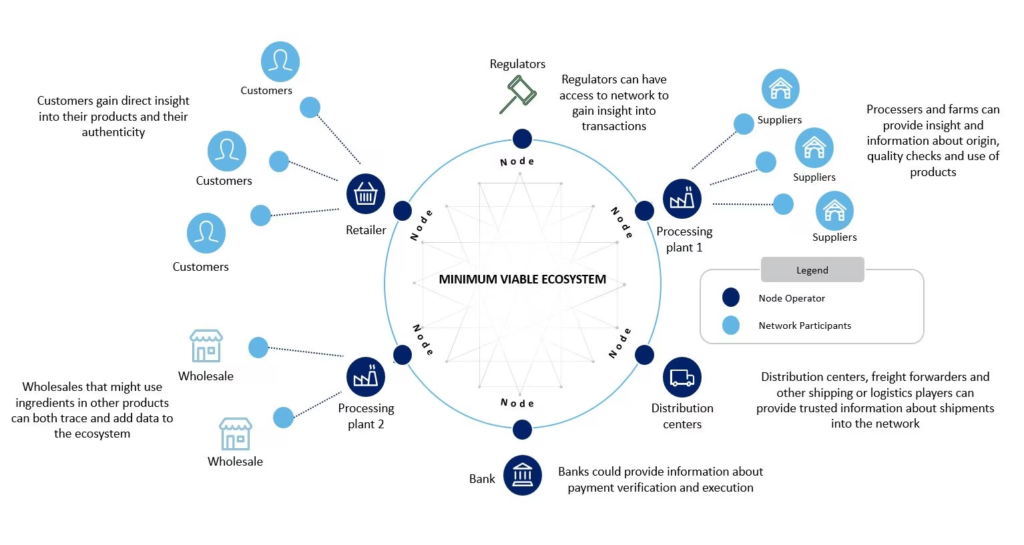Blockchain Interoperability
Opening the genuine capability of blockchain Interoperability innovation requires consistent coordinated effort and interoperability among various blockchain networks. This is where blockchain interoperability becomes an integral factor. In this blog entry, we will investigate what’s truly going on with blockchain interoperability, its advantages, challenges looked by current frameworks, expected answers for accomplishing interoperability, use cases that feature its significance, and the future viewpoint for this game-evolving idea.
What is Blockchain Interoperability?
Blockchain interoperability alludes to the capacity of various blockchain organizations to convey and connect with one another flawlessly. Consider it a scaffold that interfaces confined islands, permitting them to trade data, resources, or even whole exchanges. As of now, most blockchain frameworks work in storehouses, restricting their true capacity for far and wide reception and preventing joint effort between various stages.
By empowering interoperability, blockchain innovation can rise above its ongoing restrictions and open additional opportunities. It permits clients to get to a more extensive scope of administrations and applications across various blockchains without compromising security or effectiveness.
Interoperable blockchains use different conventions and guidelines that empower information dividing and correspondence between dissimilar organizations. These conventions work with the exchange of resources starting with one blockchain then onto the next while guaranteeing straightforwardness, unchanging nature, and security.
One vital part of blockchain interoperability is cross-chain correspondence. This includes laying out channels through which different blockchains can approve exchanges or offer significant information safely. Different methodologies like nuclear trades or sidechain systems have been created to work with this consistent association between blockchains.
Additionally, interoperability advances adaptability by tending to arrange clog issues usually connected with individual chains. By dispersing responsibility across different interconnected networks, exchange speed can be fundamentally improved while keeping up with the decentralized idea of blockchain innovation.
Blockchain interoperability holds enormous commitment for driving advancement and coordinated effort inside the computerized environment. As additional tasks center around accomplishing consistent reconciliation between different chains, we can expect energizing improvements in areas like money, production network the board, medical care records the executives – just to give some examples! Remain tuned as we dig further into the advantages and difficulties encompassing this notable idea in our forthcoming areas.
Advantages of Blockchain Interoperability
Blockchain interoperability has arisen as a distinct advantage in the realm of decentralized innovation. By empowering different blockchain stages to convey and share data flawlessly, it opens up a heap of advantages for organizations and people the same.
Blockchain interoperability advances expanded effectiveness. With various blockchains associated and ready to interface with one another, information can be traded all the more effectively, killing the requirement for repetitive cycles or manual mediations. This smooth out tasks and lessens costs while keeping up with trust and security.

Moreover, interoperability improves versatility. As opposed to being restricted to one explicit blockchain network with its impediments, associations can use different anchors at the same time to deal with bigger exchange volumes and oblige developing client bases without compromising execution or speed.
Additionally, blockchain interoperability encourages advancement by working with coordinated effort between assorted projects. Engineers can consolidate the qualities of various blockchains to make new use cases and arrangements that were not beforehand imaginable inside a solitary environment. This energizes cross-fertilization of thoughts, speeds up mechanical headways, and drives generally speaking advancement in the business.
Moreover, interoperable blockchains upgrade client experience by giving consistent access across different organizations. People can use various stages easily without requiring separate wallets or records for every one. This comfort supports more extensive reception by making it simpler for clients to draw in with various applications inside the decentralized scene.
Difficulties and Limits of Current Blockchain Frameworks
While blockchain innovation has shown extraordinary commitment in changing different ventures, it isn’t without its difficulties and limits. One of the primary obstacles confronting current blockchain frameworks is versatility. As additional exchanges are added to the organization, the time it takes to deal with them builds, prompting more slow exchange speeds.
One more test is interoperability between various blockchain networks. At present, most blockchains work autonomously, making it hard for them to flawlessly convey and share information. This absence of interoperability ruins the broad reception of blockchain innovation as organizations and associations require cross-chain usefulness.
Furthermore, security stays a worry in existing blockchain frameworks. While decentralized record innovation gives changelessness and straightforwardness, it isn’t altogether secure against cyberattacks or takes advantage of. The trustworthiness of shrewd agreements likewise represents a gamble as they can be inclined to coding blunders or weaknesses that could think twice about whole framework.
Besides, energy utilization has turned into a critical downside for some blockchains that depend on agreement systems like evidence of-work (PoW). The computational power expected for mining tasks adds to unnecessary carbon impressions and high energy costs.
There are administrative difficulties encompassing cryptographic forms of money and their utilization in blockchain frameworks across various wards. Absence of clear guidelines can block development while severe guidelines might smother development and cutoff potential open doors for trial and error with this earth shattering innovation.
Tending to these difficulties will be basic for propelling the capability of blockchain innovation further. Different ventures are now in progress endeavoring to handle these issues head-on through arrangements, for example, layer-two conventions, sharding methods, cross-chain spans, further developed agreement calculations like confirmation of-stake (PoS), improved safety efforts including auditability tools,and cooperation among industry partners.
Answers for Accomplishing Interoperability
Quite possibly of the greatest test in accomplishing blockchain interoperability is the absence of normalized conventions and correspondence systems. In any case, a few creative arrangements are being created to resolve this issue.
One methodology is using interoperability stages or middleware that go about as an extension between various blockchain networks. These stages empower consistent correspondence and information move across numerous blockchains, permitting them to cooperate agreeably.
One more arrangement being investigated is the advancement of cross-chain shrewd agreements. These shrewd agreements can work with connections between various blockchains by guaranteeing that exchanges are executed by predefined rules and conditions.
Also, a few tasks are zeroing in on making blockchain interoperability guidelines that can be embraced by different organizations. By laying out normal conventions, it becomes simpler for various blockchains to speak with one another actually.
Moreover, research is in progress to foster high level cryptographic procedures that upgrade protection while as yet empowering secure interoperability between blockchains. This incorporates advances like zero-information evidences and homomorphic encryption, which take into consideration information approval without uncovering delicate data.
Accomplishing blockchain interoperability requires cooperation and advancement from designers, scientists, and industry pioneers. By carrying out these arrangements and pursuing normalization, we can open the maximum capacity of blockchain innovation across assorted ventures and applications.
